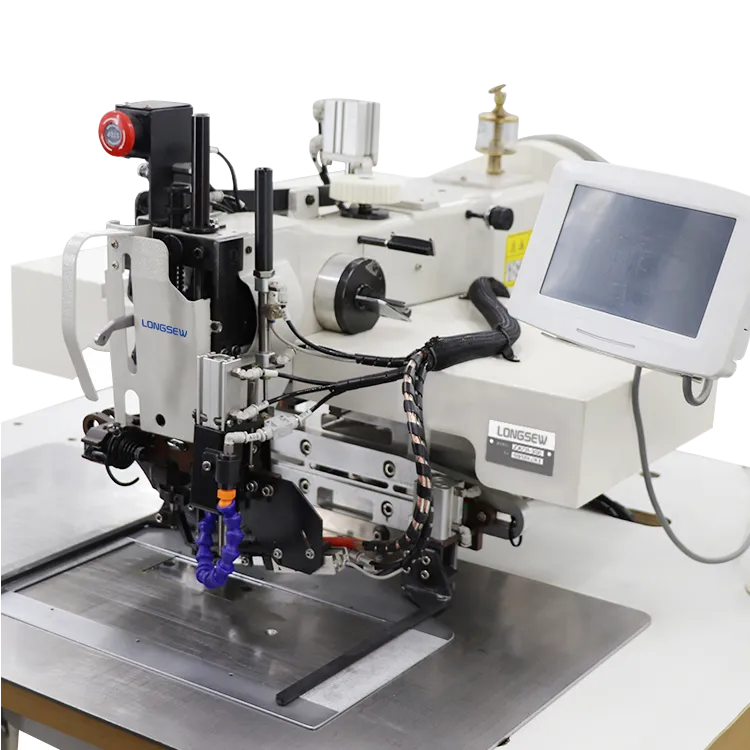Understanding the Basics of Lockstitch and Its Applications in Sewing Techniques
What is a Lockstitch?
The lockstitch is one of the most fundamental and widely used sewing techniques in the textile and garment industry. It serves as the basis for the majority of both hand and machine sewing projects due to its strength and reliability. Understanding the mechanics of a lockstitch can provide valuable insights into the world of sewing, its applications, and the evolution of stitching technology.
Definition and Mechanism
At its core, a lockstitch consists of two threads—one from the needle and the other from the bobbin. When a sewing machine operates, the needle thread is pushed through the fabric, and as it descends, a hook catches this thread and interlocks it with the bobbin thread that is coming from below. This interlocking action creates a continuous stitch that is strong and durable. The lockstitch mechanism allows for precise control over the stitch's tension and alignment, producing clean and even stitches on both sides of the fabric.
Characteristics of Lockstitch
1. Strength One of the most significant advantages of lockstitch is its strength. The interlocking nature of the stitch resists unraveling, making it ideal for seams that must endure stress, such as in garments or upholstery.
2. Versatility Lockstitch can be used on a wide range of fabrics, from lightweight materials such as silk to heavier fabrics like denim. This versatility makes it a preferred choice for many sewing professionals.
3. Appearance The lockstitch produces a tidy, straight stitch line that is visually appealing. This characteristic is particularly important in garment construction, where aesthetics play a crucial role.
4. Ease of Repair A lockstitch is relatively easy to mend. If a stitch breaks, it can typically be repaired without needing to replace a large section of stitching, thanks to its predictable and straightforward nature.
what is a lockstitch

Common Uses
Lockstitch is utilized in various applications, from everyday clothing and accessories to more specialized textiles. Here are some of the most common uses of lockstitch
- Garment Construction Most ready-to-wear garments are constructed using lockstitch due to its reliability and neat finish. This includes shirts, pants, dresses, and outerwear. - Home Furnishings Curtains, upholstery, and bed linens often employ lockstitch for both aesthetic and functional reasons.
- Leather Goods Many leather products, including bags and shoes, utilize lockstitch for its strength, which is essential for enduring the wear and tear typical of leather items.
Evolution of Lockstitch Technology
The lockstitch has its roots in hand sewing but has evolved significantly since the advent of sewing machines in the 19th century. Early sewing machines implemented a basic lockstitch mechanism manually. However, advancements in technology have led to the development of computerized sewing machines that offer various features, such as automatic tension adjustments, stitch pattern variations, and enhanced precision.
These modern sewing machines have made it easier for home sewers and professionals alike to produce intricate designs with the lockstitch technique. Furthermore, the rise of digital embroidery has incorporated the lockstitch mechanism into decorative sewing, expanding its applications beyond traditional uses.
Conclusion
The lockstitch is more than just a method of sewing; it represents a crucial element in the world of textiles and garment production. Its blend of strength, versatility, and aesthetic appeal makes it a favorite among tailors, designers, and hobbyists. From its historical roots in hand sewing to the innovations in modern machinery, the lockstitch continues to play an essential role in how we create and interact with fabrics today. Understanding its mechanics and applications can empower anyone interested in sewing to explore new creative avenues, ensuring that the lockstitch remains a staple in textile artistry for years to come.
-
Industrial Cylinder Arm Sewing Machine: Revolutionizing Heavy-Duty SewingNewsJul.28,2025
-
Cylinder Arm Sewing Machine: Perfect for Special Sewing ApplicationsNewsJul.28,2025
-
Cylinder Bed Sewing Machine: Essential for Sewing Complex MaterialsNewsJul.28,2025
-
Heavy Duty Sewing Machine: The Essential Tool for Industrial ApplicationsNewsJul.28,2025
-
Computerized Pattern Sewing Machine: Revolutionizing Precision StitchingNewsJul.28,2025
-
Heavy Duty Industrial Sewing Machine: Power Meets PrecisionNewsJul.28,2025
-
Leather Sewing Machine: The Industrial Standard for Tough MaterialsNewsJul.18,2025





























